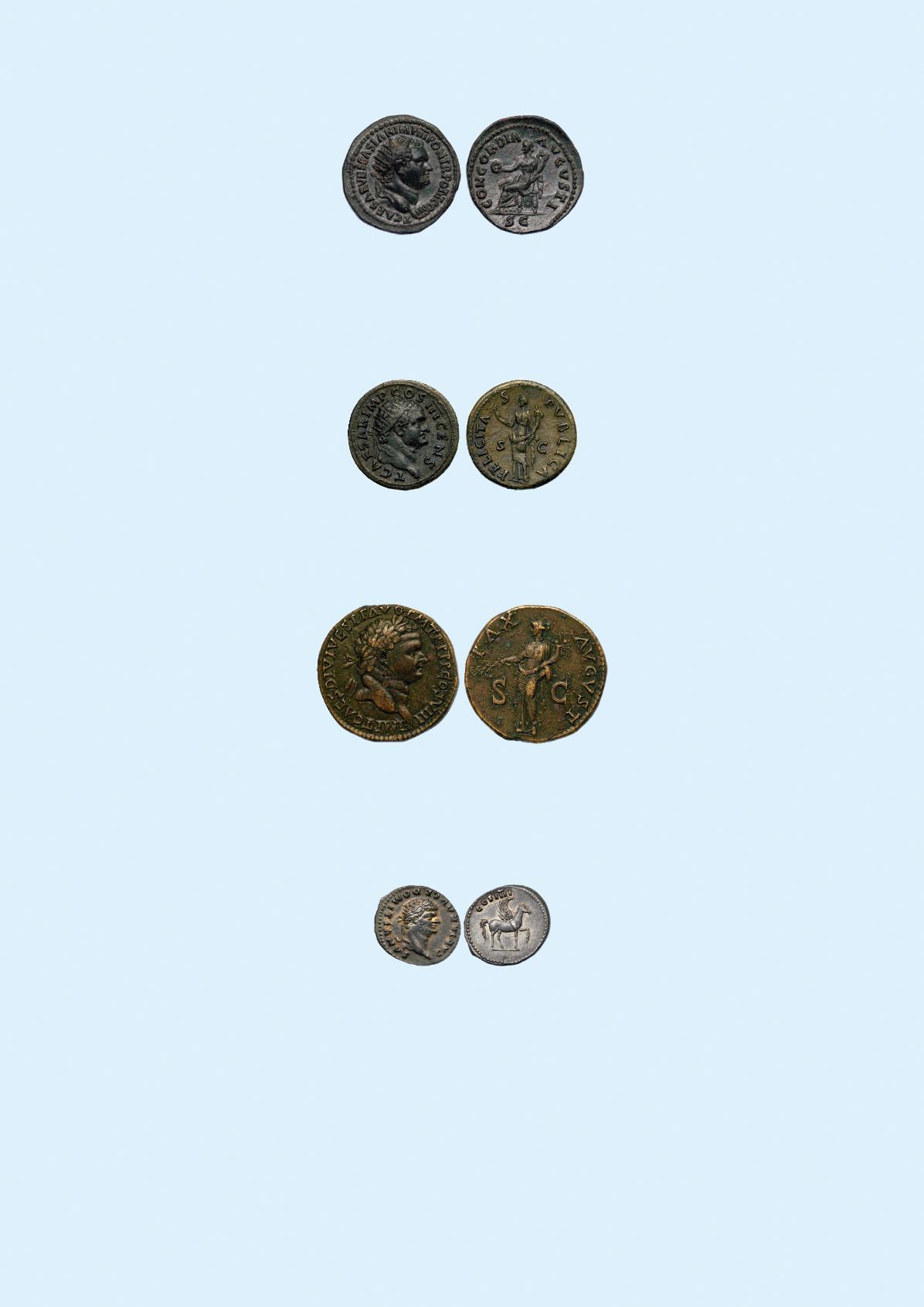
565
Titus (as Caesar, AD 69-79), Æ Dupondius, 12.8g. Mint of Rome, under Vespasian, AD 72.
T CAESAR
VESPASIAN IMP III PON TR POT II COS II
, radiate head facing right. Rev.
CONCORDIA AVGVSTI, S C
in
exergue, Concordia seated left, holding patera and cornucopiae (RIC 481; BN 581). A most attractive portrait,
struck in high relief with uniform dark green patina, extremely fine.
Very rare.
$ 3,500
566
Titus (AD 79-81), Æ Dupondius, 10.51g, 6h. Mint of Rome, struck as Caesar, AD 74.
T CAESAR IMP COS
III CENS
, head facing right, radiate. Rev.
FELICITAS PVBLICA, S-C
, Felicitas standing left, holding a caduceus
and a cornucopiae (RIC 742; BMC 707; RCV 2466 var). Dark patina, good very fine.
$ 350
567
Titus (AD 79-81), Æ Sestertius, 26.10g, 6h. Thracian mint, struck AD 80-81.
IMP T CAES DIVI VESP F
AVG P M TR PPP COS VIII
, head facing right, laureate. Rev.
PAX AVGVSTI, S-C
, Pax standing left, holding
cornucopiae and an olive branch (RIC 498; BMC 309; BN III, 240, 323; RPC II, 501). Brown patina, nearly
extremely fine.
Rare
.
$ 3,300
568
Domitian (as Caesar, AD 69-81), Silver Denarius, 3.34g. Mint of Rome, under Vespasian, AD 76/7.
CAESAR
AVG F DOMITIANVS
, laureate head facing right. Rev.
COS IIII
above, Pegasus standing right, pawing ground
with foreleg (RIC 238; BMC 193-5; RSC 47). Well struck on a large flan and perfectly centred, attractively
toned, superb extremely fine.
$ 1,500
ex Roma Auction V, 23 March 2013, lot 723
The image of Pegasus on this issue is normally shown standing right, pawing the ground with his foreleg. There is one rare die,
however, which shows him rearing instead of pawing (see Edston Hoard 91, CHRB 10, pl.17). There are many reasons why horses
paw at the ground, and most equine behaviorists will say the animal is either nervous or irritated. However, when the head is held
in a high position, it usually means that the animal is establishing dominance. Of course, the animal on this coin is not a horse but a
pegasus; it seems the engraver was attempting to convey the same idea though.


